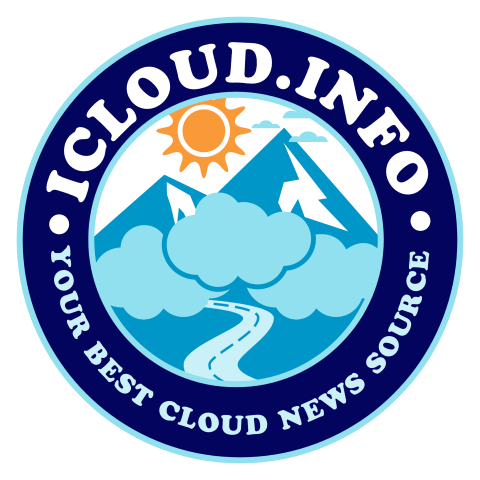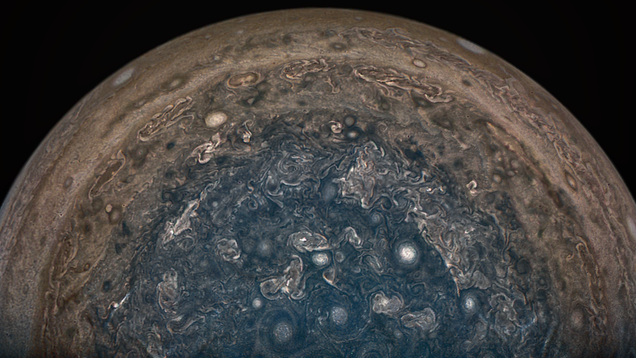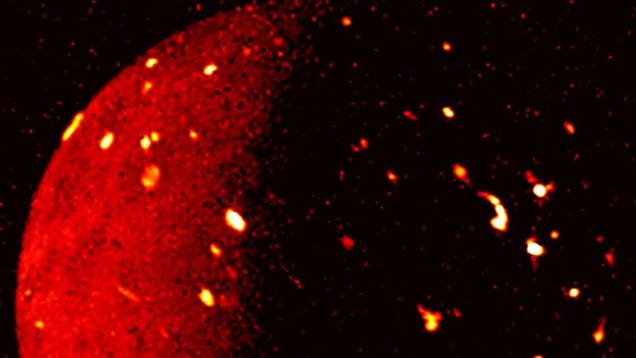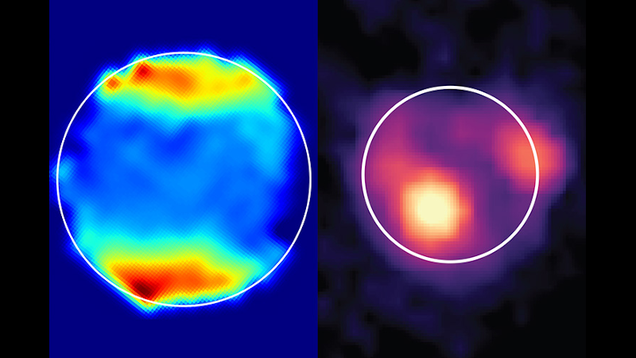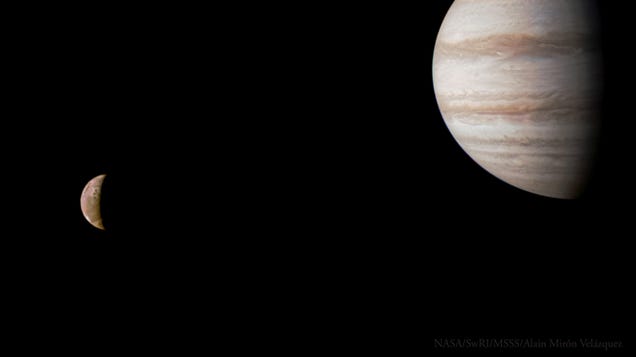
NASA’s Juno spacecraft has been orbiting Jupiter for more than seven years, capturing some of the most iconic images of the planet’s swirling winds and tumultuous storms. In the most recent image from the mission, however, the gas giant poses alongside another familiar object that’s also got a lot going on.
